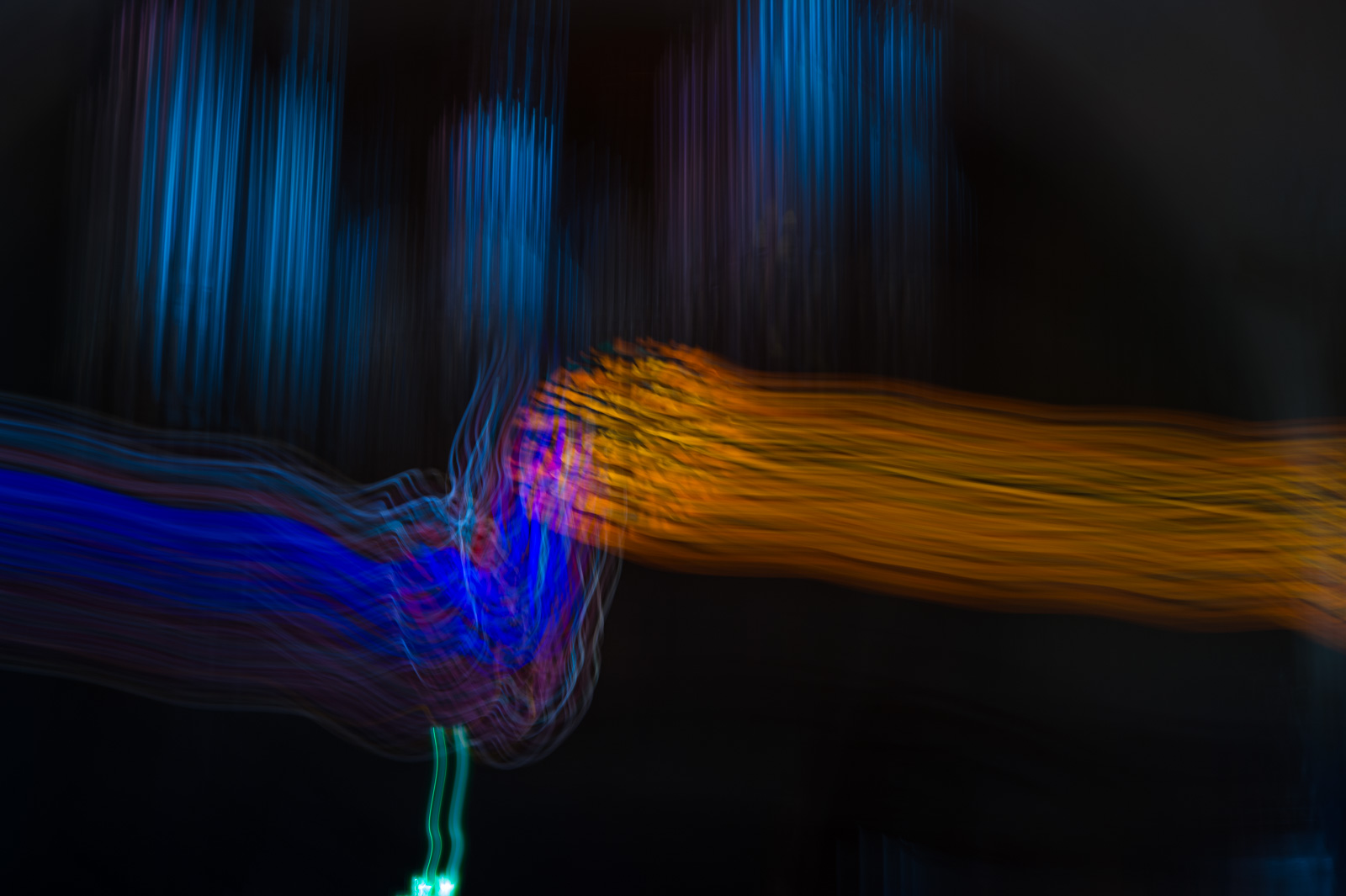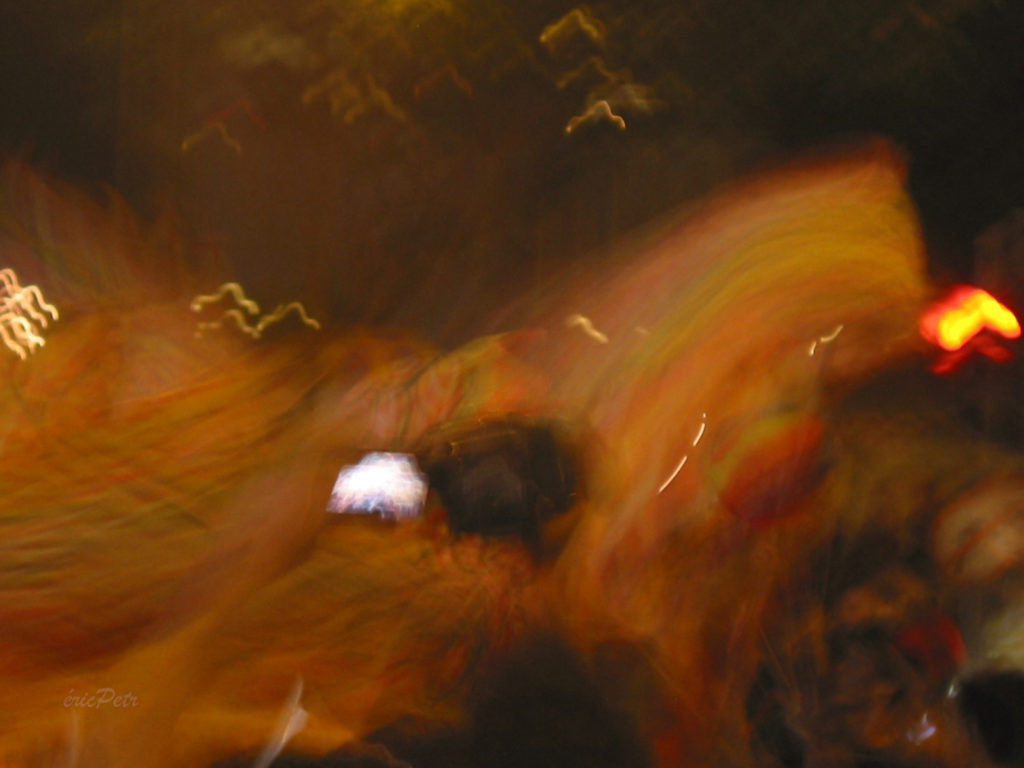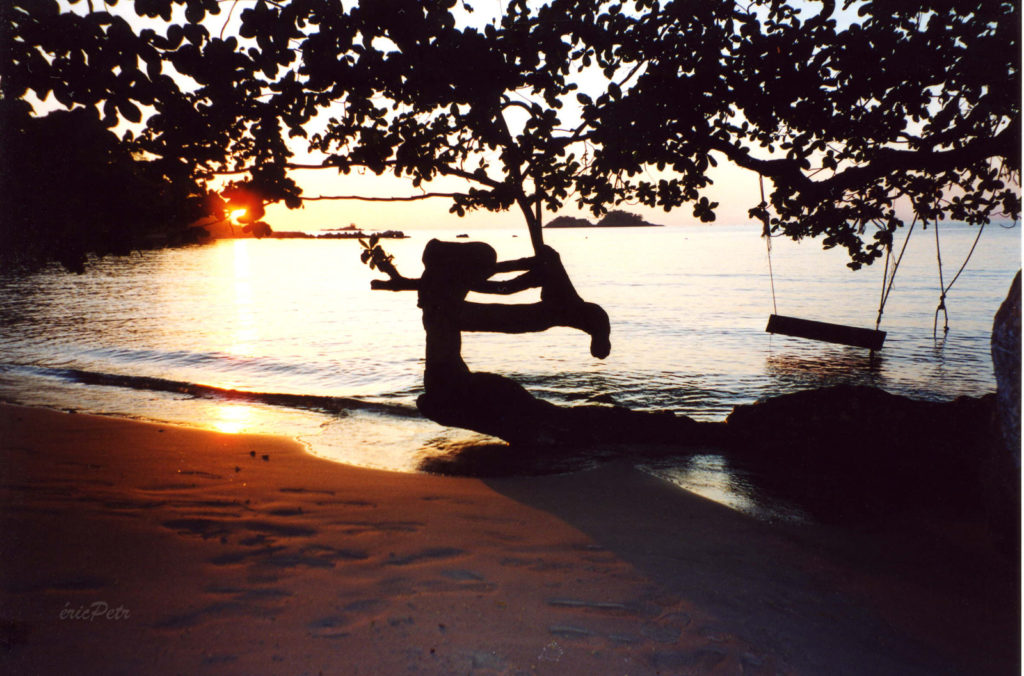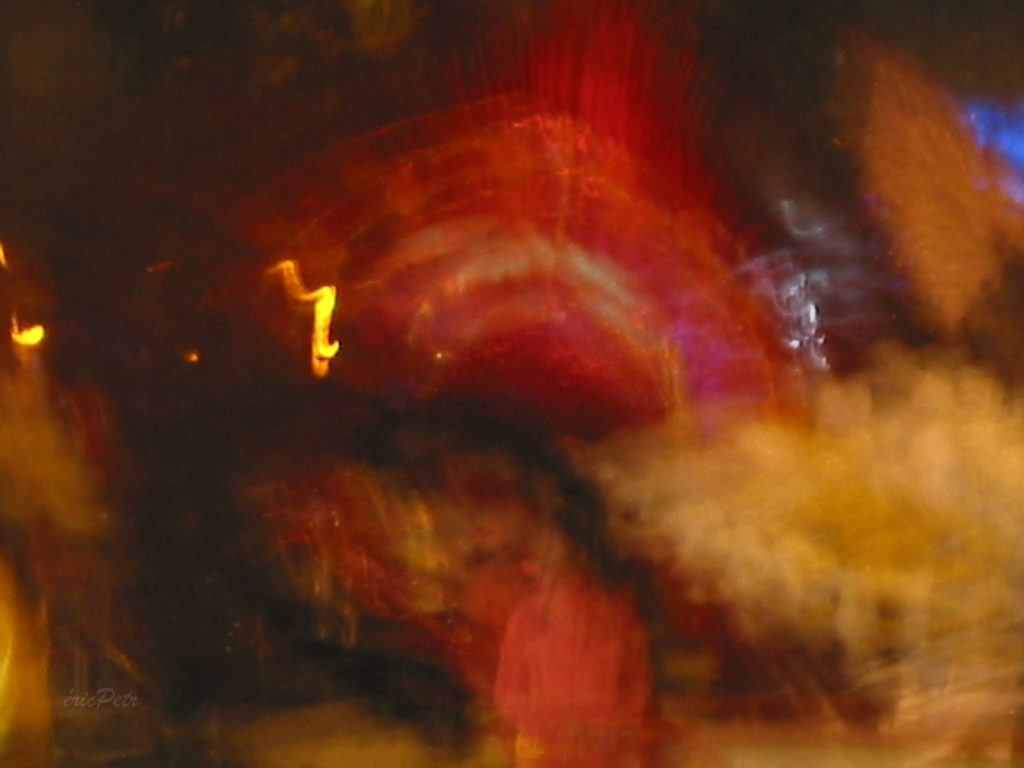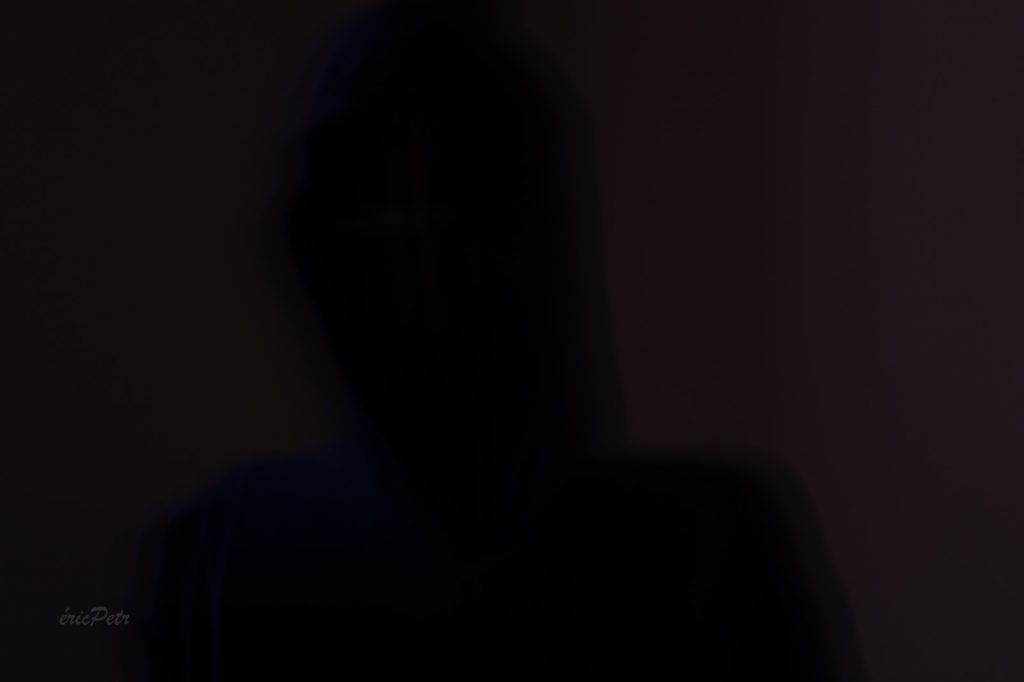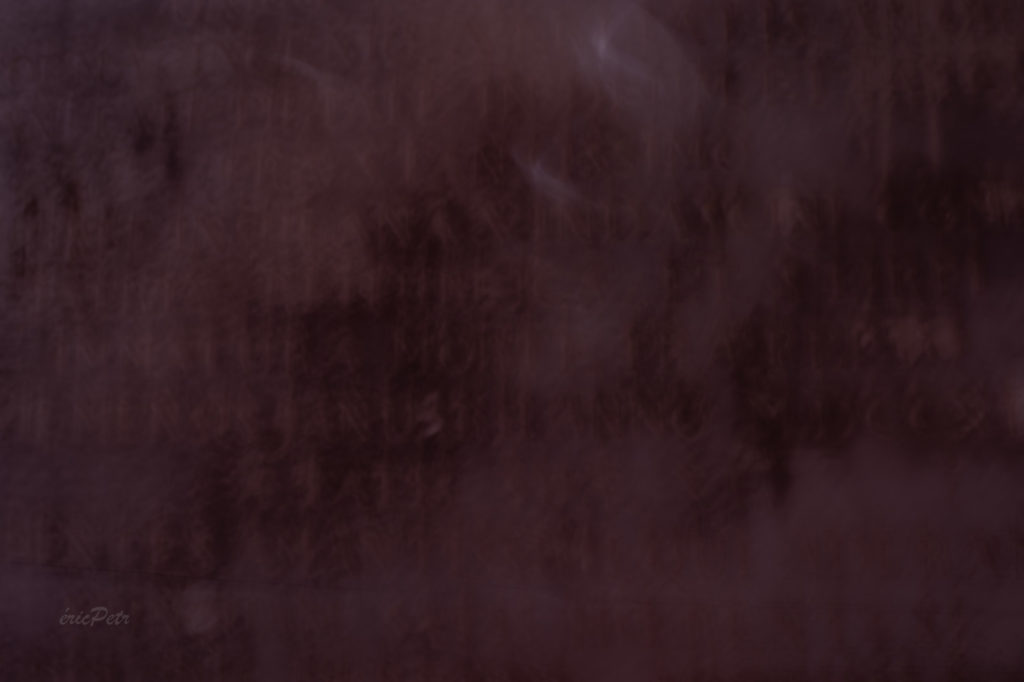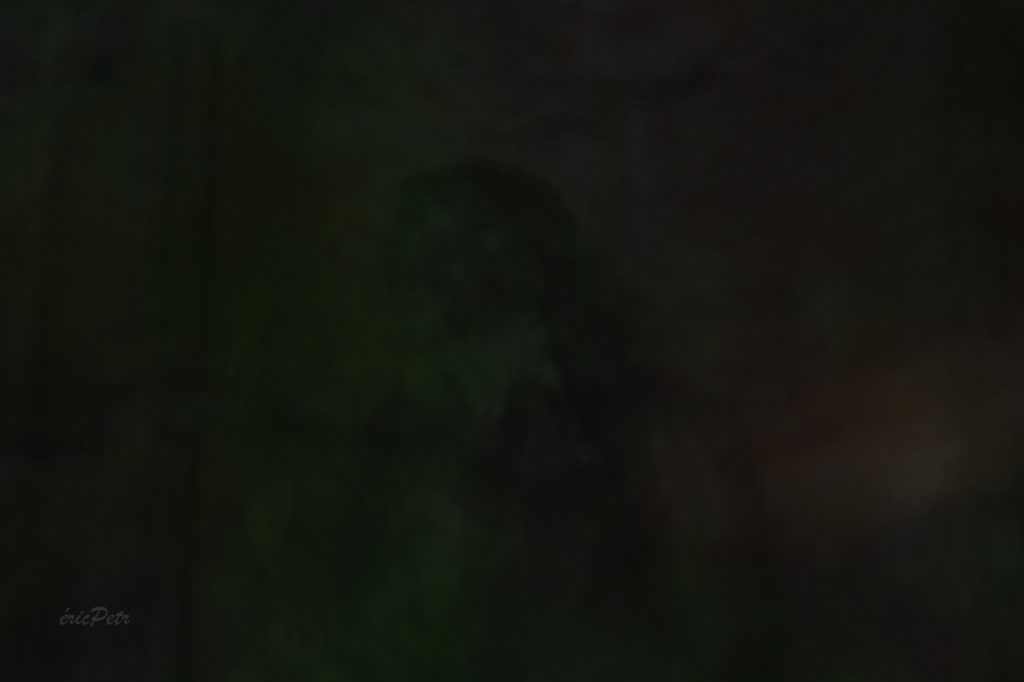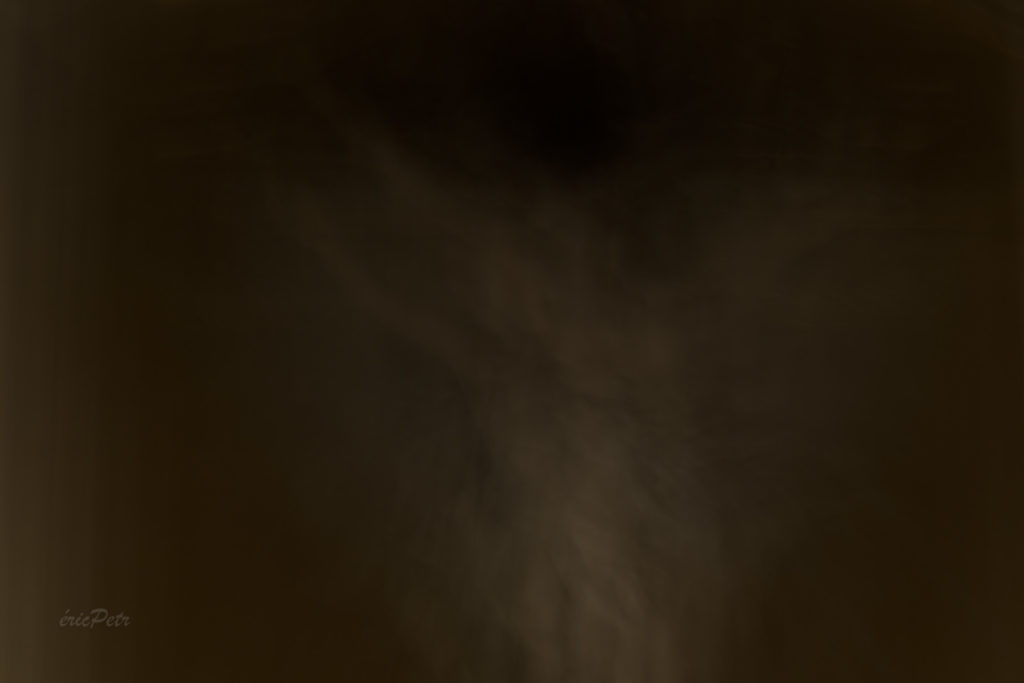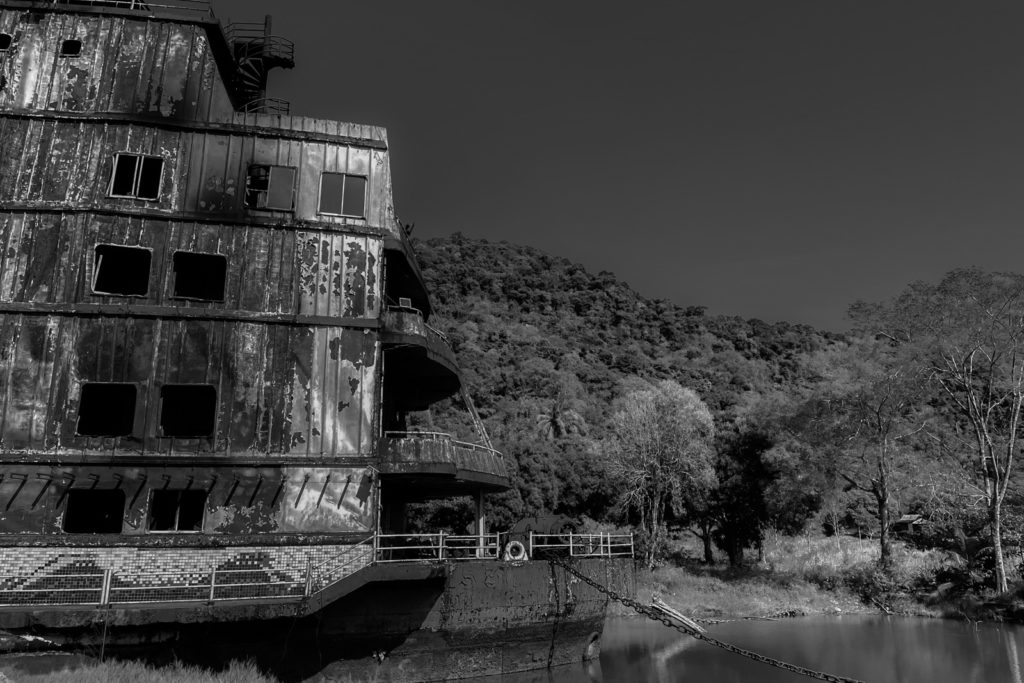
Koh Chang Island ghost boat © Éric Petr, photograph in January 2025
I’m not a photographer specializing in URBEX (Urban Exploration), but I can be drawn to certain sites where I feel an extraordinary energy, which in this case compels me to record it and visually extract its trace, memory or presence.
I’m going to present two photographic narratives, one of which was taken at the bottom of the island of Koh Chang in Thailand, and the other on Hashima, an island off Nagasaki in Japan.
Koh Chang, Elephant Island and its Ghost Boat
This is a site invested by a local billionaire to create a highly original hotel complex, but built on a site that is sacred to the Thais.
In Thailand, many places are considered sacred: ancient cemeteries, sites of worship… Yet some have been redeveloped for real estate projects, such as Bangkok’s Suvarnabhumi airport. However, the most prestigious Buddhist monks and priests generally take care to purify these places before any construction takes place.
In a way, it’s a request for permission from the deities to avoid offense.
Of course, if you don’t believe this nonsense, I recommend you stop reading immediately, or you’ll be wasting your precious time.
But the site I’m talking about wasn’t purified by the monks. So it became cursed, and a spell was cast.
We went there, however, and although we prayed at the Buddha altar on site, my wife, who was the investigator of this unusual epic, had an accident the very next day, and was deprived of the use of both her arms from the start of our stay. Rest assured, it was only for 6 weeks.
But the story doesn’t end there.
We were accompanied by a couple of friends, and they too were injured a few days later: one in the knee, the other in the back.
Many would say it’s just a coincidence. Personally, I don’t believe in chance or bad luck. Life is much more complex than that.
Whatever the case, this place is imbued with a very special vibration that everyone can feel. And even if you’re standing by the beach, under the coconut palms, a strange, almost indescribable energy grips you and makes you dizzy.
To read the rest of the story and see the photographs, click here ….
NIPPON JAPON & ÉTIQUETTE | BLOG
https://nipponjaponetiquette.blogspot.com/2025/01/thailande-koh-chang-l-aux-elephants-et.html
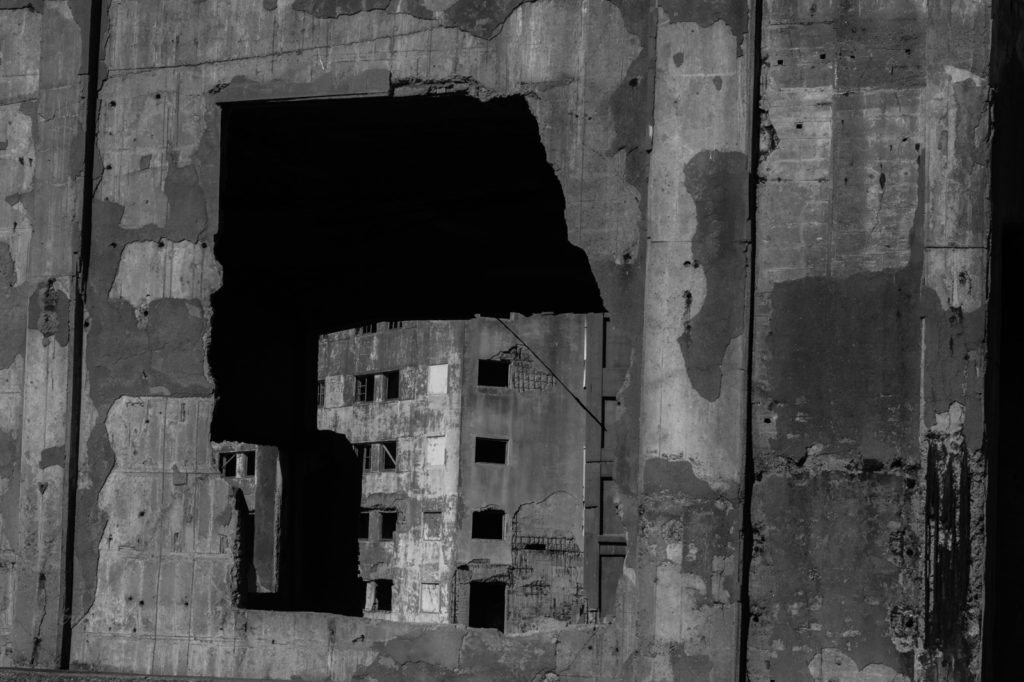
Gunkanjima, the ghost island © Éric Petr, photograph in octobre 2023
Gunkanjima: The Warship and the Ghost Island of Hashima
Hashima is an island near Nagasaki, more commonly known as Gunkanjima, because of the shape it evokes: that of a warship.
“Gunkan” means “warship”, and “Shima” or “Jima” refers to an island.
The island was a mining site from the end of the 19th century until the 1970s.
As mining operations expanded, more and more workers settled on the island—first the miners themselves, then their families, and later various professionals essential to maintaining the site. By the 1950s, Hashima had become a densely populated city, reaching an astonishing 85,000 inhabitants per square kilometer!
Now abandoned for almost 50 years, exposed to the dreaded weather of the East China Sea and frequent, merciless typhoons, the island has allowed itself to be overrun by nature.
Recently classified as a UNESCO World Heritage Site, the mining town is no longer accessible for security reasons, but visits are still possible in small groups in certain authorized parts of the island.
To read the rest of the story about Hashima Island and see the photographs, click here ….
NIPPON JAPON & ÉTIQUETTE | BLOG
https://nipponjaponetiquette.blogspot.com/2024/08/gunkanjima-ile-de-hashima.html
